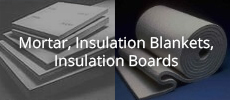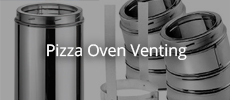X
-
That is correct, I am working on finishing the outside cuts first, and if understand your meaning UtahBeehiver the "cut back" are the cuts that are roughly perpendicular to the cuts I've already made.The tapered arch is only partially done.
I am going to reposition the arch support per JR's guidance after I finish the outside cuts so that I can mark the IR of the dome on the underside of the opening arch.Last edited by Macrinehart; 11-26-2022, 09:20 AM.
Leave a comment:
-
The tapered arch is only partially done. There is no cut back that follows in inner diameter of the dome. This is why the top dead center brick is the longest brick and the shortest ones are at the bottom of the arch. This is what Gulf is talking about.in his post. I also believe, as JR pointed out the arch form is too far in and affecting how the inner arch bricks are being formed.
Leave a comment:
-
I am about 90% confident, but let me submit a drawing for reference. Because the center of the arch is elevated above the oven floor, the IR of the oven isn't equadistant from the IR & OR of the opening arch. The same is true for the Oven OR.
In order to mark the OR I started with the keystone and shifted it to so that the IR and OR are alinged with the inside face and upper face of the Keystone. Then I linked up the inside faces of all the bricks in the arch. Finally I used a metal survey tape to mark the ray from the pivot point through the IR and marked the point where the ray intersects the OR of the opening arch.
Leave a comment:
-
I'm trying very hard to figure out what is going on here. On a hemispherical arch the top dead center brick protrudes further into the dome than the risers? Perhaps it is the viewing angle or the inside diameter cuts are yet to be done?
Leave a comment:
-
Good Tip JRPizza! I will adjust accordingly.
Have cut half way around the back, top cuts.
One thing I noted, because my opening arch is supported by one brick, the arch doesn't make a perfect semi-circle. Instead, there is a taper to the cuts moving from the keystone to the floor. I think this would be easier if it was a half circle without the supporting bricks! But then my opening would be too small. I'm committed now!
Leave a comment:
-
How do you have your arch form located? The arch form can serve two purposes - to keep the arch round and level, and to "index" the arch bricks so they are in the proper fore/aft orientation and create a flat planar surface for a door to seal against. It looks to me like your form is too far back to index against which will make it a little harder to keep the forward face of the bricks in the proper location? Moving it outboard will also help you see what is going on in your dome arch interface.1 Photo
Leave a comment:
-
Here's a quick update. The enhanced IT uses a fixed caster wheel that is anchored to a cut down brick throught the center mount with three washers, 2 underneigth, one over, and liberal application of 3:1 household oil between the washers so that thw caster can rotate easily. I drilled a 3/8" x 3" threaded rod into the caster wheel and then secured a coupling nut on that rod all the way to the wheel. My IT is made with 1/2" copper pipe. It happens that a 1/2" copper coupling joint fits snuggly over the coupling nut. The other end of the IT also has a coupling nut, with a 3/8"x18" threaded rod and a couple wing nuts to help lock the threaded rod. I mounted this to my center brick and then ripped that bieck with the wet saw to ensure the caster wheel hub is centered at the oven floor height. I used the excess of the center brick to replace a couple bricks in the floor so that my caster can rotate without obstruction.
After all this I remeasured the opening arch position and it turns out I had to pull the arch toward the center of the oven 2" to correctly intersect with the dome at the IR! I think this discrepancy was a direct result of my prior IR Pivot, with was about a half inch above the floor.
Attaching some photos for reference.
Leave a comment:
-
Can't wait to use the oven next year! I am cooking Thanksgiving dinner now and thinking about how can use my future oven! This is definately my top holiday of the year! Today's menu, roasted Turkey - this year with a herb mayonaise spread on the bird - homemade stuffing with dried cranberries and toast hazenuts, featuring my sourdough bread for the crutons! Cranberry sauce with a bit of orange juice and a cinimon stick, mashed potatoes, giblet and pan dripping gravy, homemade Parker House rolls, and blanched green beans (because something has to be green), and pumpkin pie with no-shortening crust. Traditionally our family has creamed onions too, but we took a vote this year and they didn't make the cut.
This year I'm a bit ahead of schedule so I'll get a couple hours to work on the oven! Yesterday I managed to breakaway from Thanksgiving prep to take care of a couple oven action items - first doing a little upgrade on my IT...the original had a pivot a little above the plane of the oven floor, the new one should be pretty flush. I will remark the opening arch and with this change it will probably have to move an inch or 2 inside the oven. Finally, based on @Gulf's guidance I now have a very clear idea of how to mark the radial lines on the bricks so I'll get that done (I was definately over thinking it before). If I have time I'll start cutting the back of the bricks. I'll send pictures and an update later!
In other news, my dad had some alder trees blow down in a fall storm, so I've been invited to cut my fill of alder and start drying it for oven fuel.
Happy Thanksgiving everyone!
Leave a comment:
-
-
What also worked for me is to think about the surface (plane) you are talking about as the bottom of a dome brick, not the top of the arch brick. I cut the angle on the arch a little shallower so the dome brick would not sit flat but touch along the ID and have a gap on the OD for mortar like the other dome bricks.
Just think - next Thanksgiving you will be able to cook your meal in your new oven!
Leave a comment:
-
The best cut is not a ray from the center of the dome. The best cut imo is a line drawn from a set reveal on the inner arch brick inside the dome out to where the outside diameter of the dome brick will intersect the arch. A ray shot from the center point of the dome will yield some over cutting and some under cutting of the inner arch.
Leave a comment:
-
Thank you Gulf.
Unfortunately the laser level I planned to use is missing so I ended up using a different level that has an alarm when the base is out of balance...that was a little anoying .
.
Since I could rotate the level I ended up just using the vertical line to paint a plane that intersect the pivot point and IR mark on the brick. I've attached a photo sequence that shows the lines I've marked so far.... first picture illustrates lining the level line up. Picturs 2-5 show the resulting lines. With each brick the point where my plane intersects with the outside of opening arch moves further forward. This seem like the opposite of what I expected.
If these look incorrect to experienced eyes please let me know. Thanks!
Leave a comment:
-
Here is a link to how I did it on a segmental arch, but, the concept is the same. Simmental Farm 36".
Leave a comment:





Leave a comment: